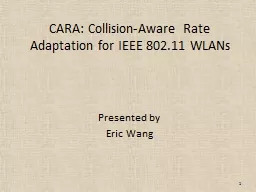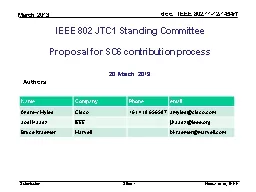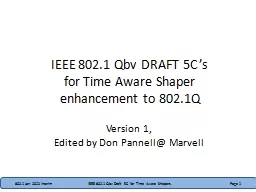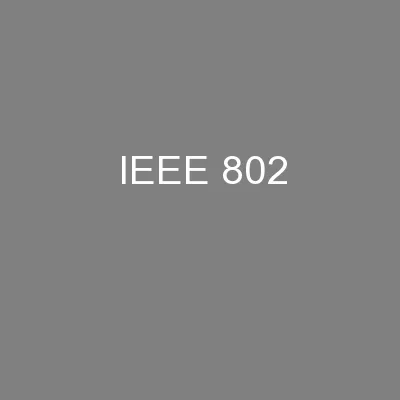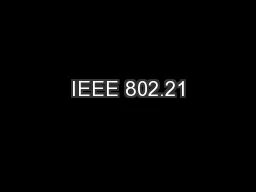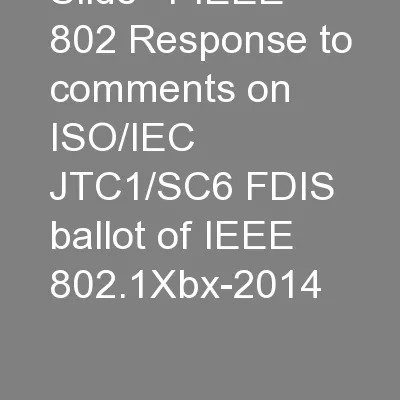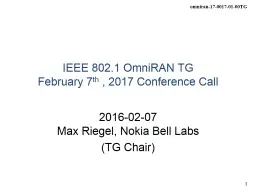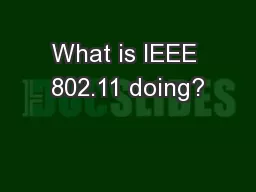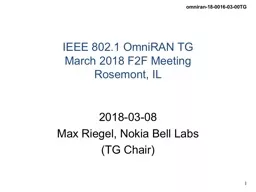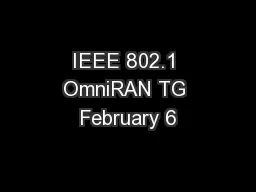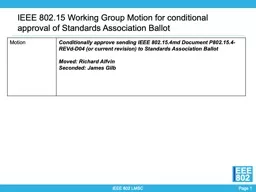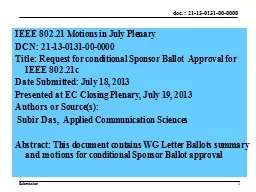PPT-CARA: Collision-Aware Rate Adaptation for IEEE 802.11
Author : nephewhers | Published Date : 2020-08-27
WLANs Presented by Eric Wang 1 Outline Introduction Related Work Preliminaries CARA Performance Evaluation Conclusion and Future Work 2 Basic CSMACA 3 Introduction
Presentation Embed Code
Download Presentation
Download Presentation The PPT/PDF document "CARA: Collision-Aware Rate Adaptation fo..." is the property of its rightful owner. Permission is granted to download and print the materials on this website for personal, non-commercial use only, and to display it on your personal computer provided you do not modify the materials and that you retain all copyright notices contained in the materials. By downloading content from our website, you accept the terms of this agreement.
CARA: Collision-Aware Rate Adaptation for IEEE 802.11: Transcript
Download Rules Of Document
"CARA: Collision-Aware Rate Adaptation for IEEE 802.11"The content belongs to its owner. You may download and print it for personal use, without modification, and keep all copyright notices. By downloading, you agree to these terms.
Related Documents

